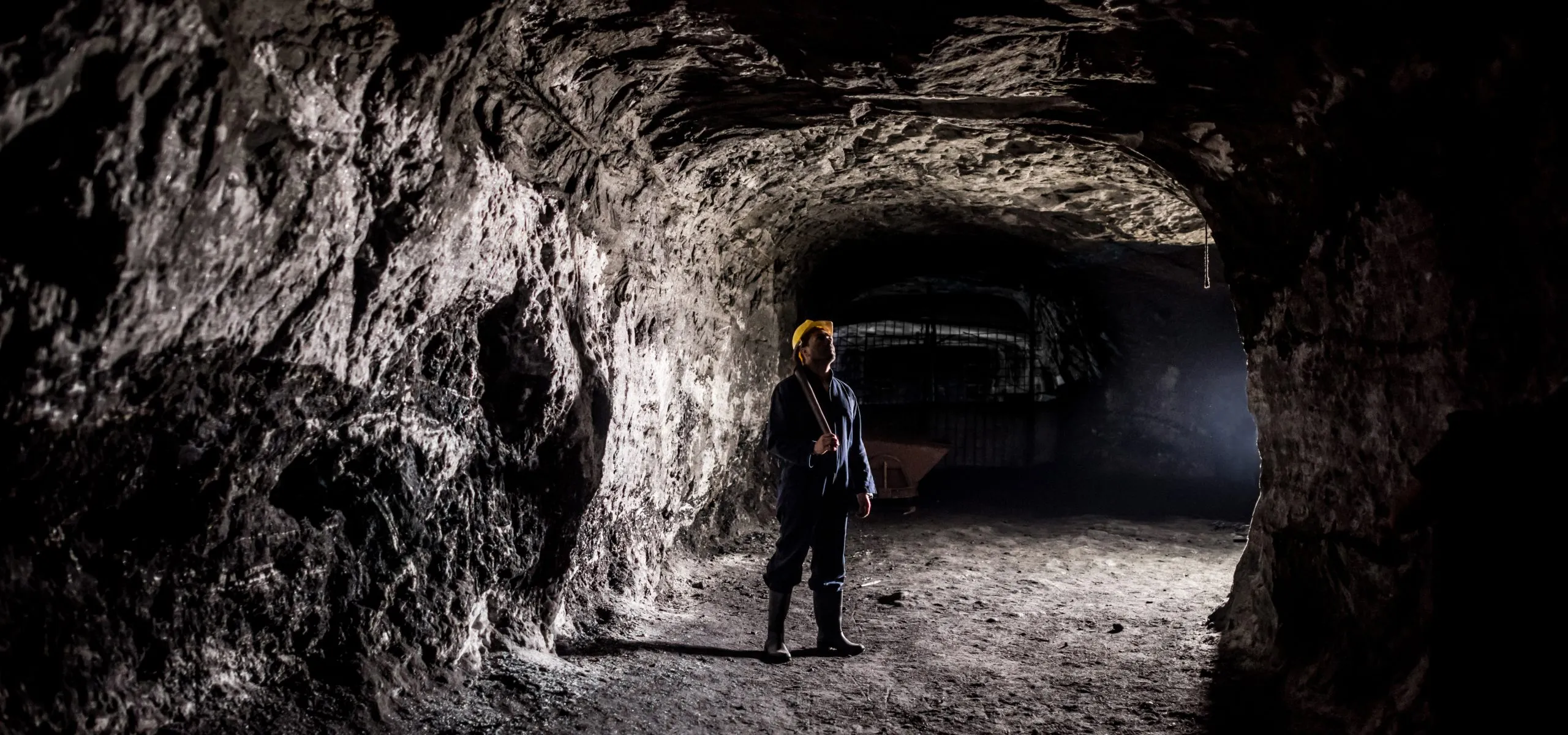Unraveling the Connectivity Challenges in Workplace Safety & Beyond

In today’s fast-paced, digital world, maintaining seamless connectivity has become a cornerstone of productivity and convenience across various industries. However, numerous workplace environments present unique challenges that hinder effective connectivity, ultimately impacting safety, efficiency, and overall operational success. Fortunately, Bodytrak® provides an innovative smart safety solution that tackles this challenge head-on to ensure organizations can keep their employees safe anywhere in the world.
Here, we dive into the complexities of connectivity in working environments, explore the solutions offered by Bodytrak, and emphasize the crucial role of employee education in maximizing the benefits of new cutting-edge technologies and enhancing employee safety.
Connectivity challenges in the workplace
Asking the essential questions
Overcoming the challenges with the right connected worker solution
The pivotal role of employee education
Frequently asked questions (FAQs)
Connectivity challenges in the workplace
- Remote and challenging terrains: Many industries, such as construction, mining and oil exploration, often require employees to work in remote or geographically demanding locations. These environments, characterized by rugged landscapes, limited infrastructure, and scarce network coverage, pose significant connectivity challenges. As a result, communication between employees and the central control system can be erratic or, in some cases, non-existent. In Australia alone, there are over 350 operating mines producing 19 useful minerals in significant amounts. It’s not surprising that research shows 93% of the mining leaders surveyed stated they intend to ramp up digitalisation efforts, spending over 20% on improving digital connectivity to overcome critical challenges including driving the environmental, social and governance (ESG) agenda.
- Hazardous and noisy environments: Manufacturing plants, construction sites and heavy machinery-driven workplaces are inherently loud, with high levels of ambient noise. This noise pollution can disrupt wireless communication systems through signal interference, making it difficult for employees to receive and transmit crucial information in real-time. The average construction project takes 20% longer than projected to complete and runs up to 80% over budget. Though the factors contributing to those delays vary, a consistent challenge across the industry is poor communication. Moreover, the presence of hazardous substances or equipment may further impede connectivity due to signal interference or safety restrictions.
- Underground and subterranean settings: Certain industries, such as mining and tunneling, involve working in underground or subterranean environments. These underground settings often come with limited access to wireless networks, making it arduous to establish reliable connectivity. Employees may find themselves isolated from the primary communication channels, which can lead to delayed responses, compromised safety and operational inefficiencies. However, with the speed of innovation, this is no longer as difficult as it may have been a decade ago; for instance, Transport for London has stated that, by the end of 2024, Tube customers will be able to connect to the internet and get cellular coverage throughout the entire London Underground, removing one of the most high-profile mobile blackspots in the UK.
Asking the essential questions
When connectivity issues are a common hurdle, it is essential to ask the right questions to identify the root cause to find the most appropriate solution. Here are two key questions that an organization can consider:
- What are the specific challenges in the workplace environment? Understanding the unique connectivity challenges faced by your organization is crucial for devising effective solutions. Assessing factors such as the physical location, terrain, noise levels, and infrastructure limitations can provide valuable insights into the nature of the connectivity issues. Isolate the areas where connectivity is weakest and determine whether it is due to remote locations, underground settings or high levels of noise interference. By gaining a comprehensive understanding of the challenges, organizations can narrow down potential solutions and make informed decisions about implementing the right solution (i.e. mobile apps vs wearable technology).
- How can advanced technologies address our connectivity issues? Technology has progressed in leaps and bounds. Once an organization has identified the connectivity challenges, it is important to explore how advanced technologies can overcome these obstacles. In the world we live in today, it is extremely likely a solution is available. Consider innovative solutions such as wearable devices, robust wireless networks, routers, and integrated communication systems. Assess whether these are compatible with the organization’s requirements as they may have the potential to provide a solution to the connectivity challenges within the organization.
By asking these critical questions, organizations can gain clarity on their connectivity issues and make informed decisions rather than dismissing new smart safety solutions. Taking a proactive approach to addressing connectivity challenges is vital for enhancing productivity, ensuring employee safety and driving operational success in diverse work environments.
Overcoming the challenges with the right connected worker solution
Through groundbreaking innovation, Bodytrak provides a solution that mitigates connectivity challenges in the workplace to protect employees, whether they are a lone worker or maintaining hot furnaces. Depending on the workplace environment, the Bodytrak device connects via cellular, WiFi, or Bluetooth® to third party network solutions. Data is transmitted from the Bodytrak device to the Bodytrak Platform via an internet connection through WiFi or cellular network. To ensure users receive the best cellular coverage anywhere in the world, Bodytrak has partnered with a global cellular operator with expansive coverage through local carriers, so there is no limit to the transmission range and data can be viewed from the other side of the globe if required.
On the off-chance the wearer is in a location where WiFi or cellular connectivity is unavailable, the Bodytrak CommPack will continue to store the data internally, while continuing to notify the user of physiological and device alerts via audio prompts, which is unlike mobile apps that may be reliant on connectivity in order to continue to operate. The Bodytrak solution ensures the user is still aware if they reach unsafe parameters so they can take the necessary precautions. Once a connection is re-established, the CommPack will transmit the stored and live data to the Bodytrak Platform.
In addition to the above, the Bodytrak device supports Bluetooth Low Energy (BLE) for connectivity to specialist devices, such as digital mobile radios. This enables the device to piggy-back off the third party partner devices where required and utilize the additional communication protocols provided to transmit data to the Bodytrak Platform.
Bodytrak’s geolocation and geofencing features utilize tracking through GPS/GNSS (and other satellites) outdoors, and triangulation of radio signals indoors. Indoor locations are provided via WiFi repeaters or BLE beacons, depending on the accuracy required.
Asking the right questions is essential. Bodytrak’s smart safety solution has been deployed across various indoor and outdoor environments in a number of different sectors, in some of the most remote and rugged locations. By sharing any challenges your organization faces, our team can ensure solutions are provided to protect your workers so that your organization can focus on what you do best.
The pivotal role of employee education
While innovative smart safety solutions can revolutionize connectivity in work environments, their effectiveness and impact can be heavily influenced by employee education and adoption. The most successful safety protocols take a holistic approach, which is why training and education are such vital components. Companies must prioritize educating their workforce about the benefits and functionalities of these technologies. By empowering employees with comprehensive training and demonstrating how to leverage these solutions effectively, organizations can unlock the full potential of Bodytrak’s offerings: equipping employees with the knowledge to interpret and respond to safety alerts, use the communication features optimally and understand how real-time data can significantly enhance workplace safety and productivity. When organizations empower their employees with the right education and training, it boosts confidence through the team and fosters a culture of proactive risk management.
Frequently asked questions (FAQs)
Is an internet connection required for the Bodytrak solution?
The CommPack will store data internally regardless of whether or not there is an internet connection and will continue to notify users of physiological and battery alerts via audio prompts. An internet connection via WiFi or cellular is required to transmit data to the Bodytrak Platform. In the event there is a break in connectivity, once it is restored, the CommPack will transmit the stored data to the Platform and continue live streaming.
We have employees that work in basements of old historical buildings where connectivity is an issue – how does this work for these employees?
Often, the reality for old and historic buildings is they tend to have poor internet connections due to the materials that have been used to construct the walls. While most materials can block the signal to some extent, modern buildings have been designed with wiring in mind, which makes it easier to install internet connections. However, Bodytrak has already successfully implemented solutions to help existing customers overcome this challenge.
During the discovery and exploration phase, the Bodytrak team will work with an organization to address the essential questions. Once there’s a clear understanding, one of the most common and practical solutions has been to patch securely into the existing network and extend the signal using ruggedised routers and/or range and network extenders designed for industrial environments. In the event this is not possible, a new network can be installed, ensuring any obstructions that may have blocked the connectivity are removed/avoided.
In 95% of workplaces, any issues with connectivity have been resolved through cellular or WiFi. However, if connection is still unavailable, users of the Bodytrak solution will continue to receive alerts via the audio piece. This is why educating employees is extremely important so they can also remove themselves from situations that may become fatal. The CommPack will continue to store the data so that no valuable insight is lost and will be uploaded to the Dashboard as soon as the connection is re-established.
Does Bodytrak need its own dedicated IT server on-site?
No. The Bodytrak Platform runs in the cloud so you do not need to install any additional hardware or software (other than the network considerations above). You can easily access the Platform from a web browser on a computer, tablet or mobile device.
Conclusion
Connectivity challenges in work environments are pervasive and demand sophisticated solutions that can adapt to diverse settings. Bodytrak’s smart safety solution tackles these challenges head-on, ensuring seamless connectivity, real-time monitoring, and prompt responses to safety hazards. However, the successful implementation and adoption of such technologies must be married with employee education. By fostering a culture of continuous learning, organizations can empower their workforce to embrace these advancements, and unlock the full potential of a connected and safe workplace.




